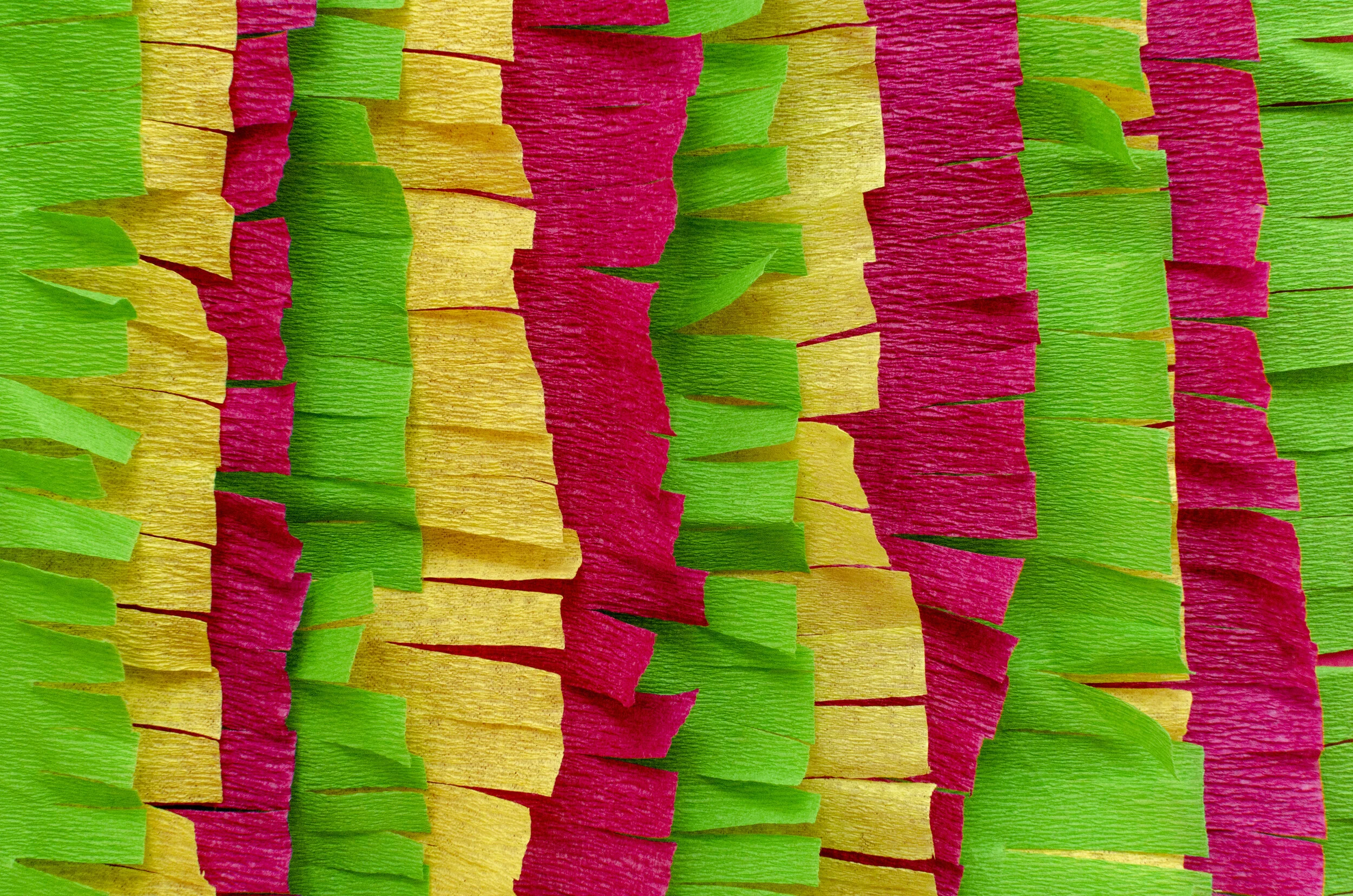More than just big and bold, the large-scale piñata-style installations that Justin Favela is best known for purposefully take up space. In his latest work, the Mexican/Guatemalan-American artist inhabits the Bolyston Street entrance of The Prudential Center with ¡Provecho!, a colorful, luminous, and substantial work depicting an array of Latin American foods and goods. Mexican tamales, Goya beans, Puerto Rican mofongo, avocados, Salvadoran pupusas, and other familiar Latin American favorites are collaged into this piñata-like tapestry. By depicting these beloved Latin American foodstuffs now ubiquitous in US cuisine with the effect of a piñata Favela confronts stereotypes of Latinx people in an effort to dismantle them.
As we gear up to open ¡Provecho!, I spoke with Justin about his favorite Latin American foods, why taking up space is important, and the complexities of identifiers.
¡Provecho! And a lot of your other work is bright and festive, and definitely has that “family celebration” vibe. Can you tell us why you love celebrating?
My family is a big influence on my work. I like to make art that honors my heritage and the people that worked very hard so that I could have the privilege of being an artist. I do a performance with my family called “Family Fiesta” where we take over traditional art spaces and make them our own by having a party! That piece is about institutional inclusion and most importantly, the political act of expressing joy as a person of color.
As an artist interested in exploring identity, belonging, and cultural reclamation, can you share some insight into the terms you use to describe yourself and why you use them?
Justin (far left) and his team working on ¡Provecho! in his studio.
I actually use the term Latinx and Latino. I am a big advocate for using the word Latinx because the term is meant to be gender-neutral but I also realize that it is important for some people to use a “Latino/Latina” to affirm their gender. I identify as Latinx, Latino, American, Mexcian-American, Guatemalan-American, Chicano and many more identifiers. I refuse to be “this or that.” Latinx identity is complicated and multidimensional.
Your work has been shown all over the world! But mostly in Las Vegas, where you’re from, and in the Southwest. Why are you excited to bring your work to Boston?
I’m excited to celebrate the Latinx community in Boston! I have many friends from the area that have expressed that they feel underrepresented in their own city. I was thinking of them. I was thinking of my own city and how the people of color that build and maintain most businesses are almost never talked about or put into the history books. Boston has such a rich and important history that includes the stories, efforts, and labor of the Latin American people that live here.
To me, your piñata-style tapestries evoke Chicano mural-making from the 1960s and 1970s as well as themes and motifs from the Pop Art of the same era. Do you see your work as connected to these movements?
Piñata in progress…
I started making large scale work years ago as a way to unapologetically take up as much space as possible in predominantly white institutional spaces. My sculptures evolved to wall pieces and I immediately made the connection to the Mexican muralist I knew about and the Chicano muralists in the United States I was never taught about in art school. Pop Art is a big influence on my work as I am obsessed with pop culture and art history.
Provecho puts some well-loved Latin American foods on display for everyone to enjoy together. What’s one of your favorite things to eat? And do you have a favorite Latin American “comfort food”?
My favorite food at the moment is nachos because I love a dish that can be crunchy and soggy in the same bite. From baseball stadiums to your local Tex-Mex joint, the versatility of the nacho makes the food accessible to the masses and a major agent of the globalization of Mexican food and culture. Allegedly invented on the Mexico/U.S. border in the 1940s, nachos still remain one of America’s favorite foods.
My favorite Latin American food is rice and beans. Classic and timeless.
¡Provecho! debuts January 21 at the Prudential Center.




